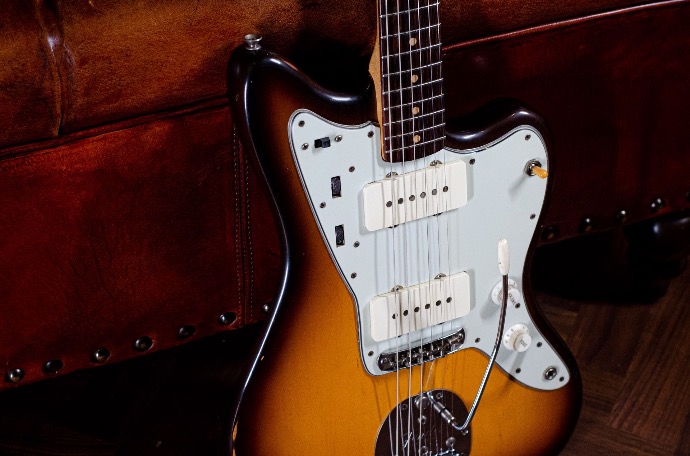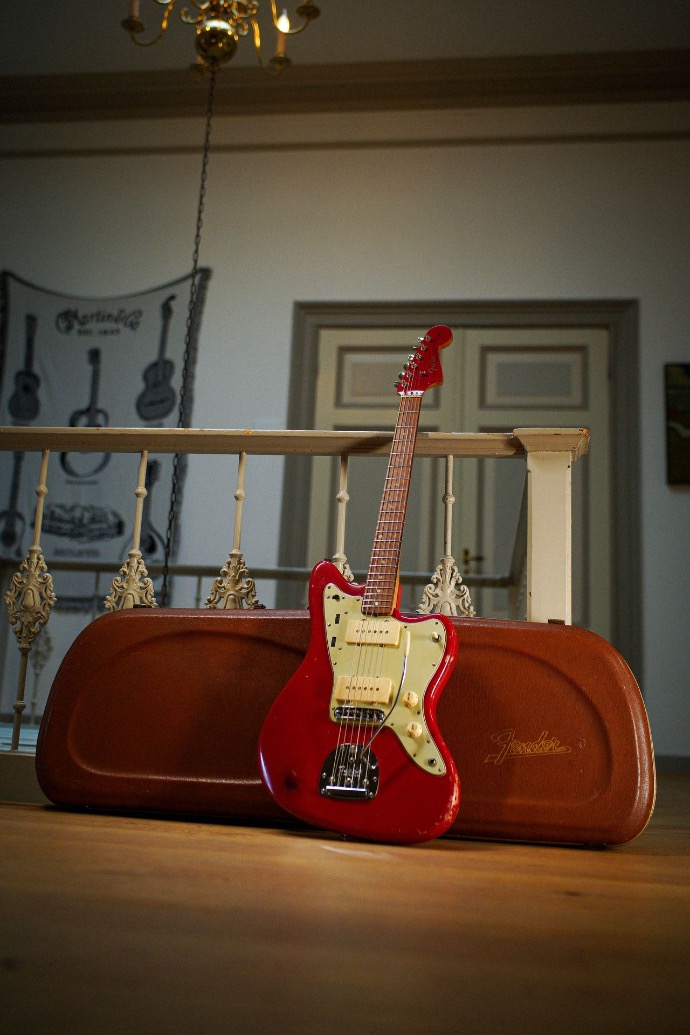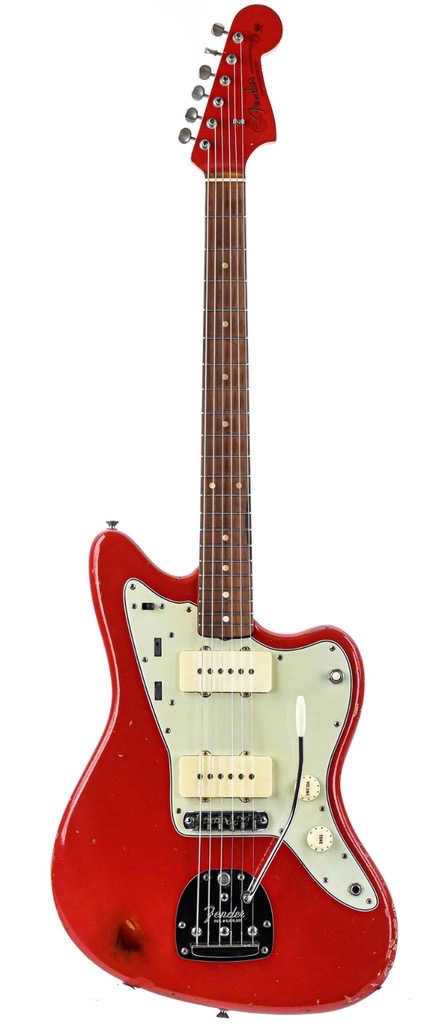The Jazzmaster's story is characterised by a false start. Indeed, Fender's alternative to Gibson's archtops started out as a big flop! Designed for jazz, it was soon rejected by most jazz players. Thanks to ‘surf rock’ and alternative rock genres such as grunge and indie in the 1990s, the Jazzmaster eventually became a huge success.
The Introduction of the Jazzmaster
After the great success of the Telecaster and Stratocaster Fender entered the jazz market, which in the 1950s was dominated by the archtops from Gibson. The Jazzmaster, designed as the more expensive brother of the Strat, was introduced in 1958.
But it didn't top the Stratocaster, and jazz players didn't play the Jazzmaster. They were more than happy with their big, hollow, archtops. However, when Fender targeted a complete different group of players and when the 1960 hit single 'Walk Don't Run' from The Ventures entered that charts, the Jazzmaster found a new purpose as the 'surf guitar'.


The design of the Jazzmaster
For the Jazzmaster, Leo Fender created a completely new design that differed significantly from the Tele and Strat. With longer body contours, the Jazzmaster was the first Fender model with an 'offset' body. In addition, Leo designed a new bridge and tremolo system, and new pickups were developed.
At first glance, the pickups look like P90s, but they are actually single coils. And aimed specifically at the jazz guitarist, the Rhythm circuit with two "thumbwheels" for volume and tone provided a very warm, mellow sound.
A Second Resurrection
Unfortunately, the popularity of surf music did not last long. During the 1970s, harder rock music came to life and guitarists demanded only 1 thing: the power of humbucker pickups! As a result, the Jazzmaster disappeared further and further from the scene until production ceased in 1980. But six years later, the Jazzmaster reappeared! Fender Japan reintroduced the model. And musicians from the alternative rock, grunge, and indie genres hadn't forgotten about the Jazzmaster either! By the 1990s, the Jazzmaster had finally gained a prominent place in the music world. Since then, this model has been seen in the hands of guitarists such as Thom Yorke of Radiohead, Nels Cline of Wilco, and Jonny Buckland of Coldplay.
1962 Jazzmaster Dakota Red
In the 1960s, Fender had strict requirements for the finish of their guitars. If they were not satisfied with the result, they sometimes gave their guitars a refinish. This rare 1962 Jazzmaster has such a "Factory Refinish".
For this, automotive paint was used, without the addition of a nitrocellulose clear coat topcoat. Because of this, the lacquer of the body does not light up green under a UV lamp, because this happens due to the aging of nitrocellulose lacquer. Since they still had to put the logo on the headstock, they did apply nitrocellulose there; and it does light up green!
The guitar features the original pickups and electronics, with the potentiometers dateable to the 22nd week of 1962. The maple neck features a slab Brazilian rosewood fingerboard.


Discover the Jazzmaster at TFOA
In addition to this rare vintage specimen, we have more Jazzmasters in stock at The Fellowship of Acoustics. With us you will find the most extraordinary creations from Fender's Custom Shop. We are also happy to help you if you want to build your own custom Jazzmaster to Gibson's archtops started out as a big flop! Designed for jazz, it was soon rejected by most jazz players. Thanks to ‘surf rock’ and alternative rock genres such as grunge and indie in the 1990s, the Jazzmaster eventually became a huge success.


